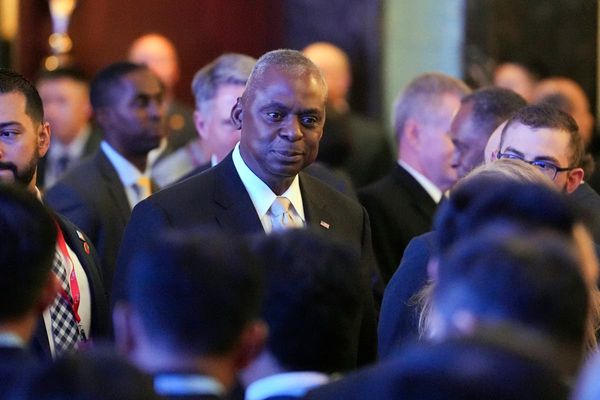
Alabama has used a new method of execution: nitrogen gas.
Kenneth Smith, who survived the state’s previous attempt to put him to death by lethal injection in 2022, was put to death Thursday by nitrogen hypoxia. It is the first new method of execution since lethal injection was introduced in 1982.
The state previously said that nitrogen gas will cause unconsciousness quickly, but critics likened the never-used method of execution to human experimentation.
What is nitrogen hypoxia?
Nitrogen hypoxia execution causes death by forcing the inmate to breathe pure nitrogen, depriving him or her of the oxygen needed to maintain bodily functions.
Had it been used before?
Before Thursday, no state had used nitrogen hypoxia to carry out a death sentence. In 2018, Alabama became the third state – along with Oklahoma and Mississippi – to authorize the use of nitrogen gas to execute prisoners.
Some states are looking for new ways to execute inmates because the drugs used in lethal injections, the most common execution method in the United States, are increasingly difficult to find.
How is it supposed to work?
Nitrogen, a colorless, odorless gas, makes up 78% of the air inhaled by humans and is harmless when breathed with proper levels of oxygen.
The theory behind nitrogen hypoxia is that changing the composition of the air to 100% nitrogen will cause an individual to lose consciousness and then die from lack of oxygen.
Much of what is recorded in medical journals about death from nitrogen exposure comes from industrial accidents – where nitrogen leaks or mix-ups have killed workers – and suicide attempts.
How did the state execute Smith?
Smith was first strapped to a gurney in the execution chamber.
In his final statement, he said: “Tonight Alabama causes humanity to take a step backwards … I’m leaving with love, peace and light.”
He then made the “I love you sign” with his hands toward family members who were present. “Thank you for supporting me. Love, love all of you,” Smith said.
Nitrogen gas was then administered through a mask. Smith appeared conscious for several minutes before apparently convulsing and pulling against the restraints for at least two minutes, with his eyes rolling back into his head, Marty Roney of the Montgomery Advertiser reported. Afterwards, Smith breathed deeply for several minutes until his breathing was no longer detectable.
Smith’s time of death was approximately 8.25pm US eastern time.
The Rev Jeff Hood, who served as Smith’s spiritual adviser and was present for the execution, said prison officials in the room “were visibly surprised at how bad this thing went”.
“What we saw was minutes of someone struggling for their life,” Hood said.
Alabama’s corrections commissioner, John Hamm, said nitrogen was running for about 15 minutes, in a news conference.
“It appeared that Smith was holding his breath as long as he could,” Hamm said at the press conference.
Before the execution, the state heavily redacted sections of the protocol related to the storage and testing of the gas system.
The Alabama attorney general’s office had told a federal judge that the nitrogen gas would “cause unconsciousness within seconds, and cause death within minutes”.
What were the criticisms?
Smith’s attorneys said the state was seeking to make him the “test subject” for a novel execution method.
They argued that the mask the state planned to use was not airtight and oxygen seeping in could subject him to a prolonged execution, possibly leaving him in a vegetative state instead of killing him. A doctor testified on behalf of Smith that the low-oxygen environment could cause nausea, leaving Smith to choke to death on his own vomit.
Experts appointed by the United Nations human rights council earlier this month cautioned that, in their view, the execution method would violate the prohibition on torture and other cruel, inhuman or degrading punishment.
The American Veterinary Medical Association wrote in 2020 euthanasia guidelines that nitrogen hypoxia can be an acceptable method of euthanasia under certain conditions for pigs but not for other mammals, because it creates an “anoxic environment that is distressing for some species”.
Is this the same as the gas chamber?
Not exactly. Some states previously used hydrogen cyanide gas, a lethal gas, for executions. The last prisoner to be executed in a US gas chamber was Walter LaGrand, the second of two German brothers sentenced to death for killing a bank manager in 1982 in southern Arizona. It took LaGrand 18 minutes to die in 1999.
Who was the prisoner?
Smith was one of two men convicted of the 1988 murder-for-hire of a preacher’s wife. Prosecutors said Smith and the other man were each paid $1,000 to kill Elizabeth Sennett on behalf of her husband, who was deeply in debt and wanted to collect insurance money.
Alabama attempted to execute Smith in 2022 by lethal injection. He was strapped to the gurney in the execution chamber being prepared for lethal injection, but the state called off the lethal injection when execution team members had difficulty connecting the second of two required intravenous lines to Smith’s veins. Smith was strapped to the gurney for nearly four hours, according to his lawyers, as he waited to see if the execution would go forward.
Were there legal challenges?
The US supreme court rejected Smith’s final appeal on Thursday that requested a stay of the execution.
Supreme court justice Sonia Sotomayor, along with the two other liberal-leaning justices, dissented from the decision. Sotomayor wrote: “Having failed to kill Smith on its first attempt, Alabama has selected him as its ‘guinea pig’ to test a method of execution never attempted before. The world is watching.”
Smith had argued that the state’s proposed procedures violated the ban on cruel and unusual punishment. He also argued that Alabama violated his due process rights by scheduling the execution when he had pending appeals and that the face mask would interfere with his ability to pray.
In a separate case, Smith argued that it would violate the constitutional ban on cruel and unusual punishment for the state to make a second attempt to execute him after he already survived one execution attempt.
What are the potential effects for states?
Lethal injection is the most commonly used execution method in the United States, but death penalty states have struggled at times to obtain the needed drugs or encountered other problems in connecting intravenous lines.
Now that the Alabama execution has gone forward, other states may seek to start using nitrogen gas.







